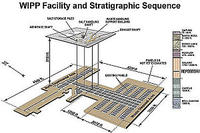-
Nuclear cooperation with non-NPT member states debated
The United States, Britain, and the Czech Republic have all backed a Dutch paper tied to the meeting last week of the Nuclear Suppliers Group (NSG) which urges closer ties with nuclear-capable countries outside of the Treaty on the Non-Proliferation of Nuclear Weapons (NPT), including Israel, Pakistan, and India. Opponents of the Dutch proposal say it would legitimize the proliferation of nuclear weapons, while supporters say the proposal merely recognizes reality.
-
-
NC State awarded $25 million NNSA grant to launch nuclear proliferation detection effort
North Carolina State University was awarded a 5-year, $25 million grant by the National Nuclear Security Administration’s (NNSA) to develop the next generation of leaders with practical experience in technical fields relevant to nuclear nonproliferation. The new Consortium for Nonproliferation Enabling Capabilities, or CNEC, aims to be the pre-eminent research and education hub dedicated to the development of enabling technologies and technical talent for meeting the challenges of nuclear nonproliferation in the next decade.
-
-
New detection technology to help combat nuclear trafficking
According to the International Atomic Energy Agency (IAEA), the greatest danger to nuclear security comes from terrorists acquiring sufficient quantities of plutonium or highly enriched uranium (HEU) to construct a crude nuclear explosive device. The IAEA also notes that most cases of illicit nuclear trafficking have involved gram-level quantities, which can be challenging to detect with most inspection methods. Special algorithm coupled with commercial X-ray scanners allows detection of small amounts of fissile materials in luggage.
-
-
Red Team’s concepts, approach gain support
Headed by Thom Mason, director of Oak Ridge National Laboratory (ORNL), Red Team aims to modernize the uranium processing procedure on a budget of $4.2 billion to $6.5 billion. Even before Red Teamdelivered its report on alternatives to the expensive Uranium Processing Facility (UPF) at the Y-12 nuclear weapons plant by the 15 April 2014 deadline, the group of experts, who come from different disciplines, had already gained support among energy officials and some members of Congress.
-
-
Improving the aerodynamic design of B61-12 bomb
Sandia National Laboratories has finished eight days of testing a full-scale mock unit representing the aerodynamic characteristics of the B61-12 gravity bomb in a wind tunnel. The tests on the mock-up were done to establish the configuration that will deliver the necessary spin motion of the bomb during freefall and are an important milestone in the Life Extension Program to deliver a new version of the aging system, the B61-12.
-
-
Lt. Gen. Frank Klotz (Ret) confirmed as DoE undersecretary for nuclear security, NNSA administrator
Lieutenant General Frank G. Klotz, United States Air Force (Ret.), was confirmed by the Senate on Tuesday, 8 April 2014, as the Department of Energy’s undersecretary for nuclear security and administrator for the National Nuclear Security Administration (NNSA).
-
-
New consortium dedicated to developing nuclear arms control verification technologies
A consortium of thirteen universities and eight national laboratories, led by the University of Michigan and including the Los Alamos National Laboratory as a partner, has been awarded a $25 million grant by the NNSA. The consortium is dedicated to the research and development (R&D) of nuclear arms control verification technologies, including nuclear safeguards effectiveness.
-
-
New group formed to monitor Savannah River Site, nuclear waste issues in SE U.S.
Savannah River Site Watch (SRS Watch), a new public-interest watchdog group, was launched last week in what it said was a response to the need for increased monitoring of the nuclear projects carried out by the U.S. Department of Energy (DOE). The group says it has been formed to focus on an array of nuclear projects now underway at Savannah River Site (SRS), the sprawling 310-square mile complex located near Aiken, South Carolina.
-
-
Los Alamos National Lab resumes transuranic waste shipments

The waste was received at Waste Control Specialists in Andrews, Texas, where it will be temporarily staged until it can be shipped to the Waste Isolation Pilot Plant (WIPP) near Carlsbad, New Mexico for final disposal. WIPP has been closed since mid-February as a result of radiation leaks in underground storage tunnels. The shipments keep LANL on track to complete 3,706 Campaign on schedule. The campaign aims to remove 3,706 cubic meters of nuclear waste from LANL by 30 June 2014.
-
-
New center will work to improve methods to detect, prevent the spread of nuclear weapons
The National Nuclear Security Administration (NNSA) has awarded the University of Michigan $25 million to establish the Center for Verification Technology. A team from thirteen universities will work with eight national labs to analyze nuclear nonproliferation efforts, improve technologies for monitoring weapons-grade materials and detecting secret weapon tests, and train the next generation of nonproliferation experts.
-
-
Possibility of “dirty bombs” a major terrorism threat
The International Atomic Energy Agency (IAEA) has warned that there were 140 cases of missing or unauthorized nuclear and radioactive material in 2013 — a pressing reminder that the possibility of possession of nuclear materials by terrorist organizations is both real and current.
-
-
Obscure element shows promise for nuclear waste storage

One of the least known elements of the periodic table, californium, may hold the key to the safe and effective long-term storage of nuclear waste, according to new research. The researchers have demonstrated that californium (Cf) has an “amazing” ability to bond and separate other materials, as well as being extremely resistant to radiation damage.
-
-
New infrared technique remotely to detect dangerous materials
Researchers say that infrared technology holds the potential to spot from afar whether a site is being used to make nuclear weapons. They developed a model which precisely characterizes the material in each pixel of an image taken from a long-wave infrared camera. The U.S. National Nuclear Security Administration (NNSA) funded the project. The government’s long-term goal for infrared technology is remotely to detect the exact materials, chemicals and gases coming and going from factories or other sites suspected of illegal nuclear production.
-
-
S.C. sues DOE over Savanah River MOX facility
South Carolina decided to go to court to prevent the Obama administration from cutting off funding for a troubled multi-billion dollar Savanah River plant in which weapons-grade plutonium would be processed and turned into suitable fuel for commercial nuclear reactors. The initial budget for the MOX project, when it was launched a decade ago, was just under $4 billion. Since then, construction costs have reached $8 billion, and DOE officials now say the plant will cost about $30 billion over the years it is in use.
-
-
DOE: Contrary to rumor, there are no evacuation plans for southeastern New Mexico
The Department of Energy (DOE) said the other day that an Internet rumor which has been fueling concerns earlier this week about the need to be prepared to evacuate southeastern New Mexico because of recent events at the Waste Isolation Pilot Plant (WIPP) is “absolutely” without basis. DOE notes that monitoring conducted by Nuclear Waste Partnership of air, soil, water, and vegetation are showing no radiation releases that would approach levels causing health concerns.
-
More headlines
The long view
What We’ve Learned from Survivors of the Atomic Bombs
Q&A with Dr. Preetha Rajaraman, New Vice Chair for the Radiation Effects Research Foundation in Hiroshima and Nagasaki, Japan.
